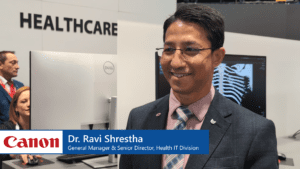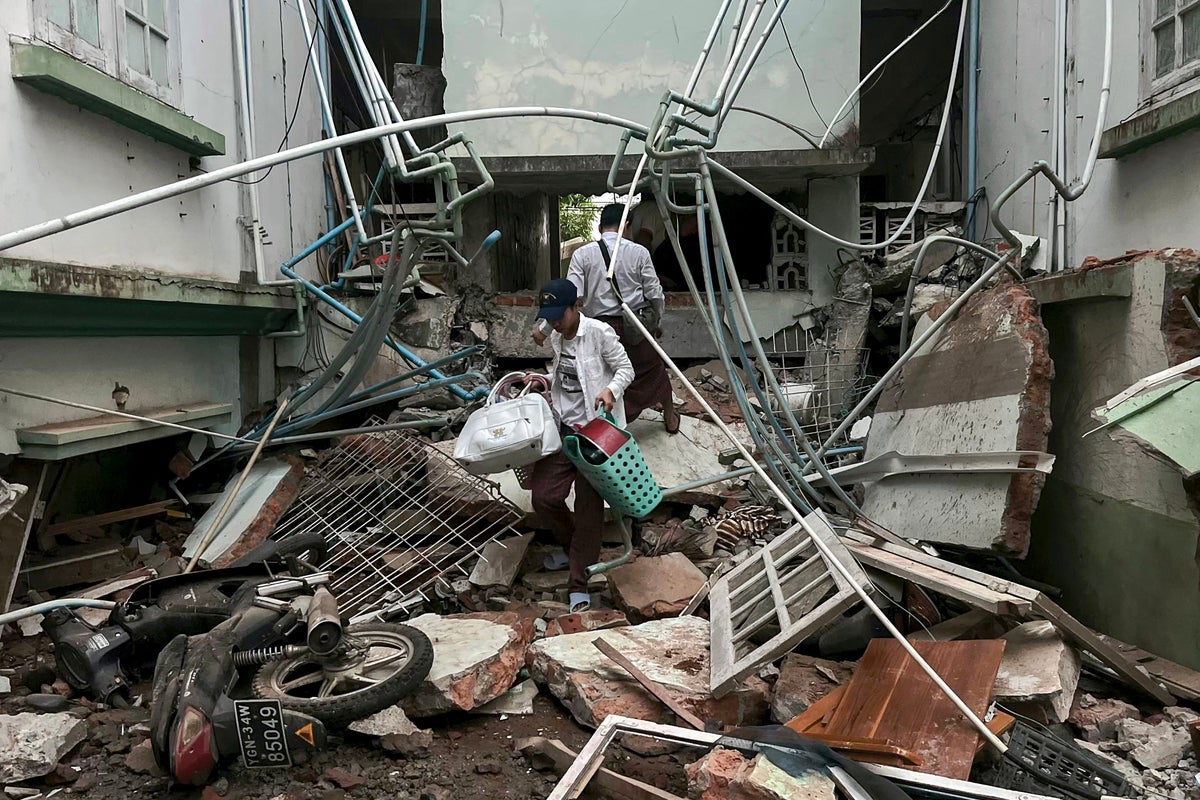Canon’s Vision for Patient-Centered Imaging: Less Stress, More Efficiency
Being patient-centered is very easy to say, but very challenging for a vendor to deliver. There is one company that is not only achieving this with their revolutionary CT Suite, but also through careful and thoughtful integration of AI into their solution. Which company is it?

Being patient-centered is very easy to say, but very challenging for a vendor to deliver. There is one company that is not only achieving this with their revolutionary CT Suite, but also through careful and thoughtful integration of AI into their solution. Which company is it?
Healthcare IT Today had the opportunity to walkthrough Canon Medical Systems’ latest imaging solutions with Dr. Ravi Bikram Shrestha, General Manager & Sr. Director of Global Healthcare IT. He shared details about the company’s latest scanner, their innovative Alphenix 4D CT Suite that literally puts the patient in the center, and the new AI capabilities woven into their imaging software applications.
Key Takeaways
- AI must fit seamlessly into workflows. Radiologists don’t need extra steps—they need AI that works in the background, streamlining processes without adding complexity.
- Patient-centered imaging is the future. Canon’s Alphenix 4D CT Suite keeps the patient stationary while imaging equipment moves around them, reducing transfers and improving care.
- CIOs must prioritize AI that enhances both efficiency and experience. The best AI solutions improve workflows without disrupting how clinicians work, leading to better patient outcomes.
AI That Works For Clinicians and Does Not Get in the Way
Radiologists need AI that integrates seamlessly into their existing workflows without forcing them do perform extra clicks or additional tasks.
“What we’re hearing loud and clear from our customers is: ‘We want AI to just be embedded in the workflow,’ not something that creates more work.” said Dr. Shrestha.
Instead of requiring radiologists to manually run AI models or review results separately, Canon has designed solutions where AI assists in the background, providing insights without adding extra steps. With AI automation, tasks like protocoling, image acquisition, and post-processing can happen automatically with minimal manual intervention.
The best AI is the kind that’s invisible to the user but powerful in its impact. For example, their INSTINX AI-Assisted Workflow solution prioritizes critical cases in real time, flagging urgent findings so that high-risk patients don’t wait unnecessarily. “The majority of patients with positive findings will get bumped right to the top of the radiologist’s worklist,” Dr. Shrestha explained. “That way, before the patient even leaves the center, they might be able to find out their results.”
But AI needs to offer more than just efficiency gains for healthcare providers, it must make the experience better for both clinicians and patients.
Rethinking Imaging: The Patient Stays, the Machines Move
Imaging suites have traditionally been designed around the machines, requiring patients to be moved between different rooms and scanners for various procedures. Canon’s Alphenix 4D CT flips this approach, keeping the patient stationary while the imaging technologies move around them.
This design is more than just a convenience—it eliminates unnecessary patient transfers, reducing risk and improving efficiency.
“Instead of taking a patient from the ER to a triage room, then to a CT scanner, and finally to an interventional lab, everything can now happen in a single space,” Dr. Shrestha explained. “The result? Faster diagnoses, fewer transfers, and better overall patient care.”
For clinicians, this means less time spent repositioning patients and recalibrating machines—everything is within reach, and imaging happens in one continuous workflow. “The more we can eliminate unnecessary steps, the more we can focus on delivering the best possible care,” Dr. Shrestha added.
AI-Powered Stroke Detection: Shaving Minutes Off Critical Care
In stroke care, every second matters. Canon’s AI-powered stroke detection is already cutting diagnosis-to-treatment time in half at some hospitals, ensuring faster interventions with fewer delays. At Gates Vascular Institute, their AI-driven triage system automatically analyzes scans and alerts the care team within 30 seconds—even before a radiologist has reviewed the images.
“Even if the radiologist isn’t available, the entire stroke care team receives immediate alerts via mobile devices, PACS, or other systems,” Dr. Shrestha shared. “That means critical cases don’t sit in a queue—they move forward as fast as possible.” Faster stroke detection means more patients regaining function instead of facing lifelong disability.
In this case, AI is giving care teams the information they need, when they need it, without waiting for manual processes to catch up.
Improving the Clinician Experience: AI That Reduces Burnout
Radiologists and technologists are under constant pressure to work faster while maintaining accuracy. Although AI is often seen as a way to improve efficiency, if it adds more steps or requires additional manual oversight, it can actually increase burnout and clinician dissatisfaction rather than reduce it. That’s why Canon is focused on automation that works with clinicians, not against them.
“At New York Presbyterian, radiologists using our AI-assisted imaging workflows have reported a 40% increase in efficiency because they spend less time manually adjusting images and more time on actual diagnosis,” Dr. Shrestha said. This has led to an improvement in overall staff satisfaction.
What IT Leaders Need to Do Now
In radiology, AI that simply processes images faster isn’t enough. The focus must be on solutions that fit into existing workflows, reduce unnecessary manual effort, and improve both the patient and clinician experience. Hospitals and health systems that succeed will be those that prioritize seamless AI integration, rethink traditional imaging workflows, and eliminate inefficiencies that slow down patient care.
Learn more about Canon Medical Systems at https://global.medical.canon/
Listen and subscribe to the Healthcare IT Today Interviews Podcast to hear all the latest insights from experts in healthcare IT.
And for an exclusive look at our top stories, subscribe to our newsletter and YouTube.
Tell us what you think. Contact us here or on Twitter at @hcitoday. And if you’re interested in advertising with us, check out our various advertising packages and request our Media Kit.












































































































.jpg?#)


































